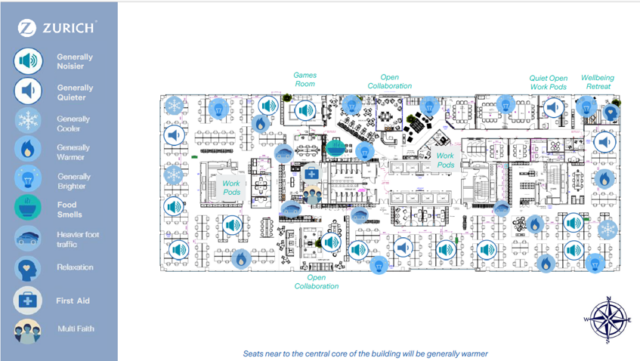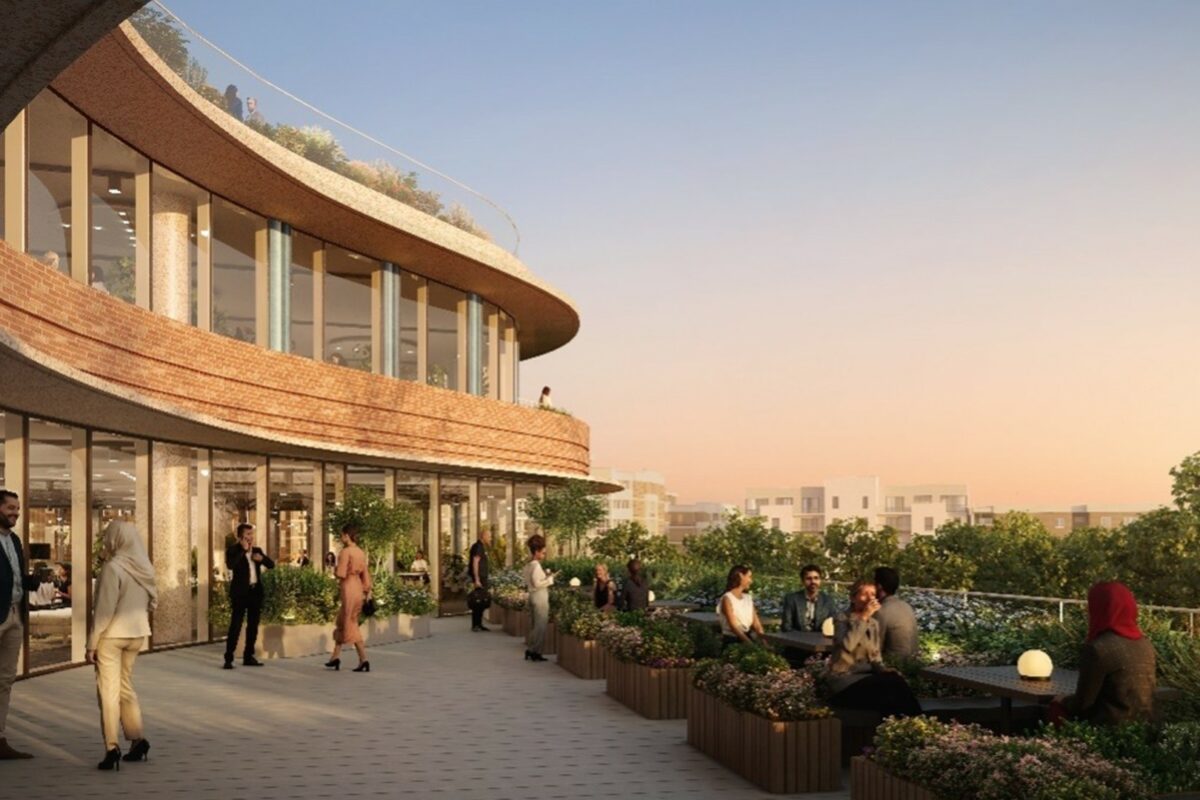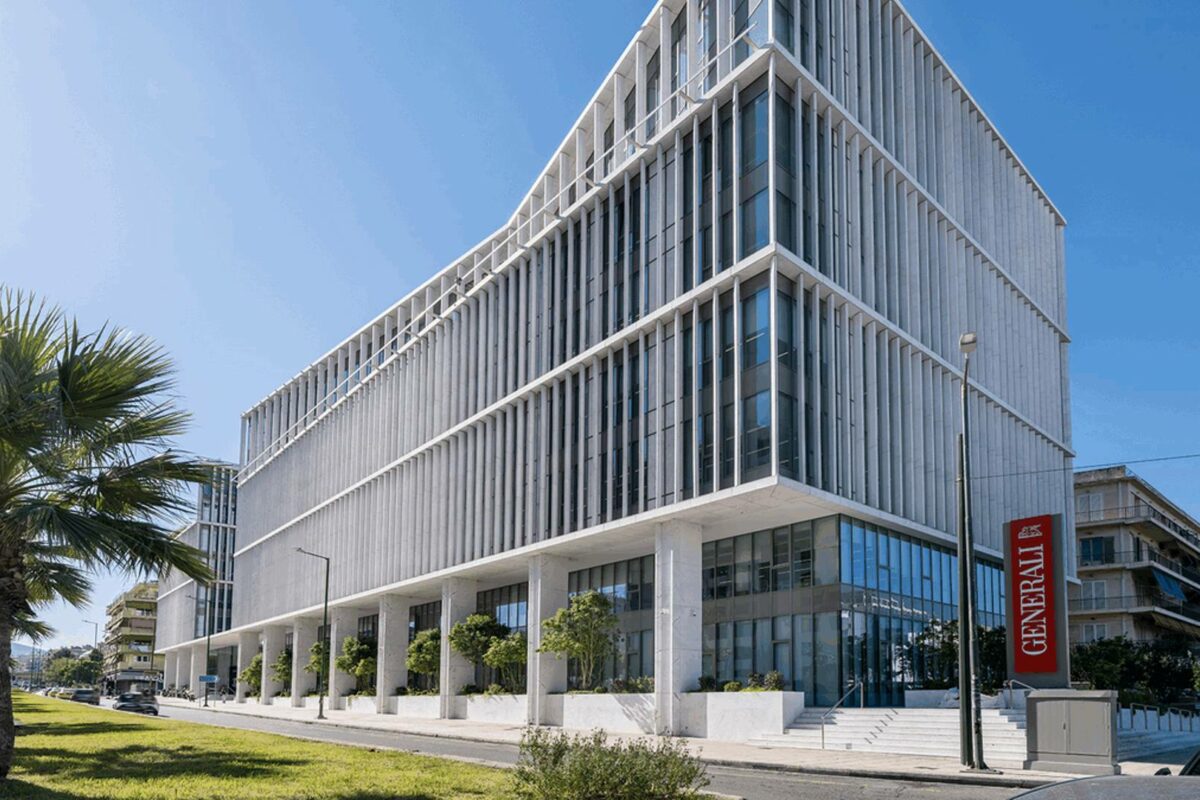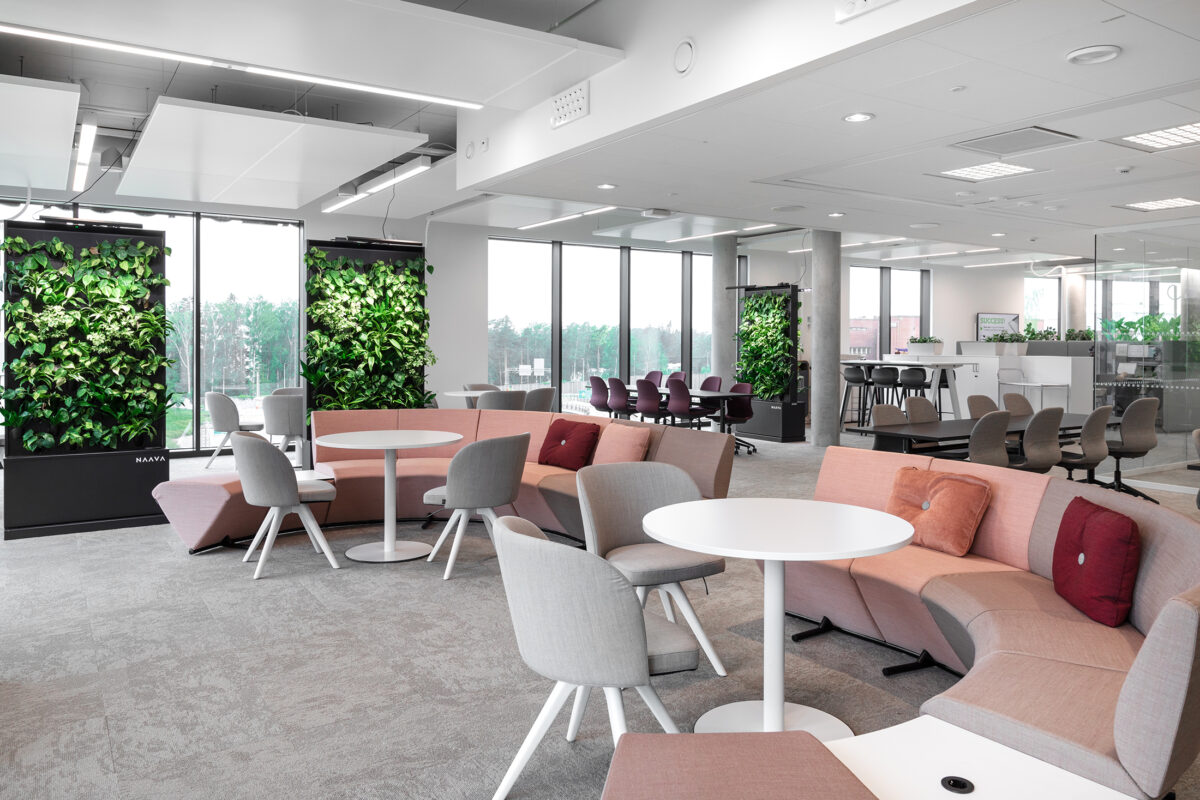Insurance firm Zurich UK is setting the precedent on inclusive maps by creating sensory maps for each of its sites. The maps mark levels of temperature, noise, foot traffic, and smells to give employees a better understanding of what to expect in each area of the office – therefore giving them the choice of picking the location that best suits their needs.
Sensory maps, like the one below, provide a visual reference of which senses might experience extra stimulation in each location. This information supports employee needs throughout the workplace, varying from neurodiverse people to women experiencing menopause.

Recent research from accessible designers Motionspot found that 1 in 6 people (17%) have considered leaving work due to lack of support in relation to their menopause symptoms, such as heat flashes. Of the 2,000 women surveyed, only 25% had work environments that offered ability to control office temperatures.
With sensory maps, people have the choice to select a location where they are most comfortable. Where a person with autism might prefer a quieter location, another employee might thrive on the buzz of office chatter.
Ultimately, sensory maps provide freedom of choice, leading to higher levels of comfort, satisfaction, and productivity.
Zurich UK’s diversity and inclusion manager, Sally Blake, said, “It’s important to remember that accessible design benefits everyone, and it doesn’t only mean physical adjustments to a building.”
“This will help anyone visiting one of our offices, whether they have a long- or short-term sensory need, or even if they are just visiting for the first time and want to get their bearings in advance.”
Ed Warner, Motionspot founder, says, “Small changes in the design of workplaces make a big difference to how staff feel and perform at work. Improvements include changes to lighting, acoustics, design of quiet spaces, and conscious use of colours and materials for neurodivergent staff.”
Content Team
Work in Mind is a content platform designed to give a voice to thinkers, businesses, journalists and regulatory bodies in the field of healthy buildings.




